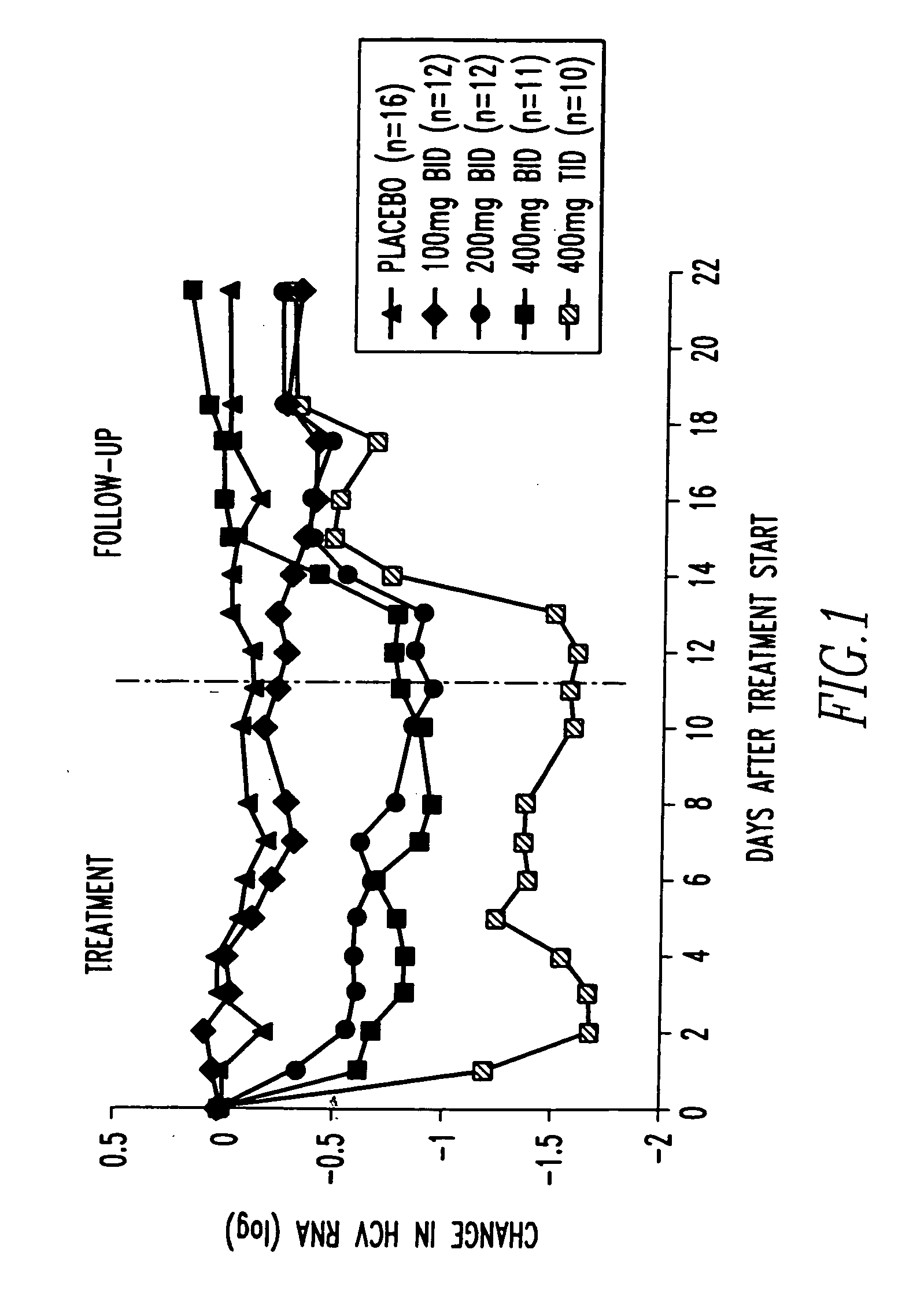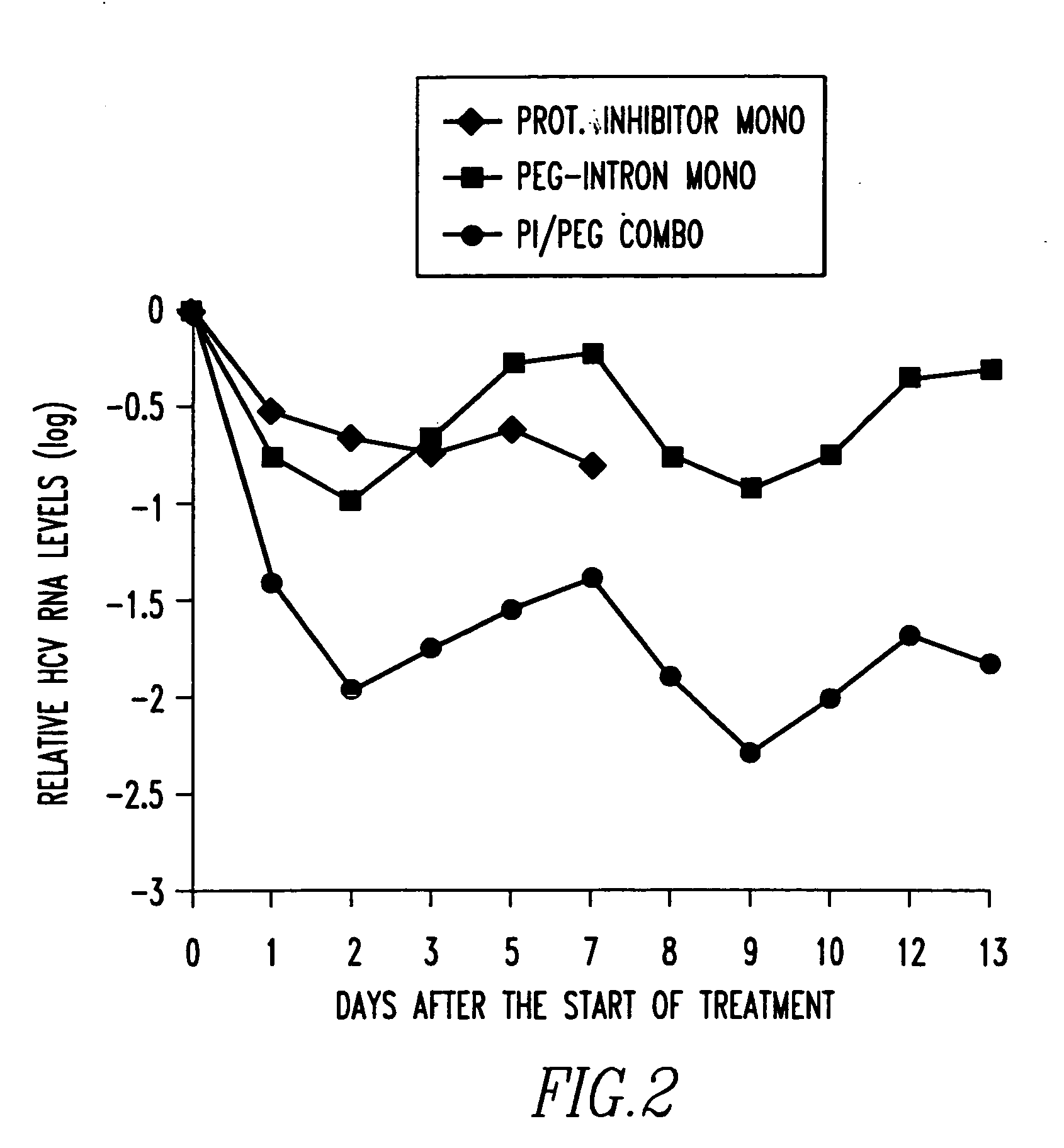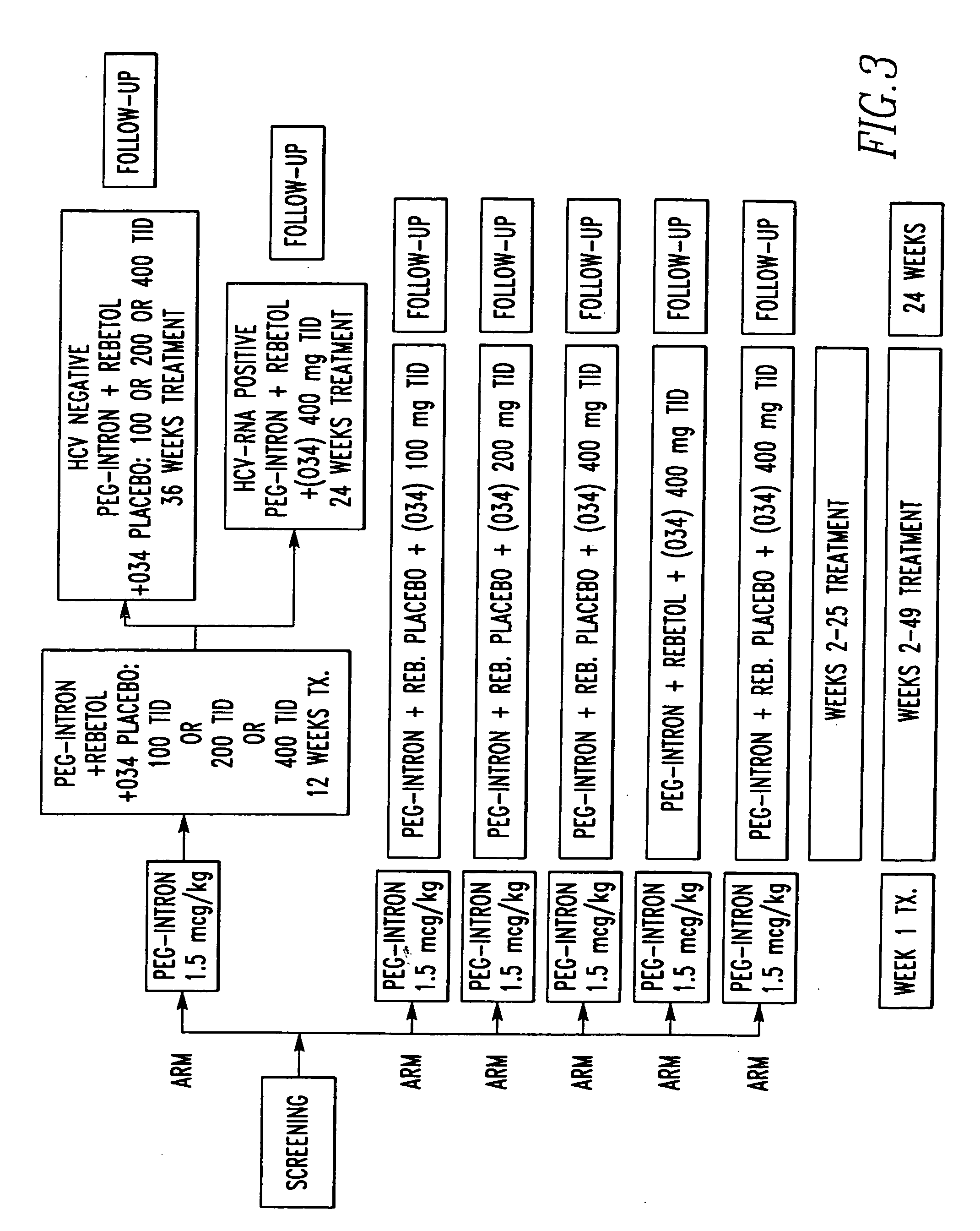Method of treating interferon non-responders using HCV protease inhibitor
a technology of protease inhibitor and interferon, which is applied in the direction of drug composition, peptide/protein ingredient, peptide source, etc., can solve the problems of low sustained response rate of therapies, frequent side effects, and poor treatment effect of patients with hcv infection
- Summary
- Abstract
- Description
- Claims
- Application Information
AI Technical Summary
Benefits of technology
Problems solved by technology
Method used
Image
Examples
example a
Preparative Example A
[0732]
Step 1
[0733] A solution of acid 1 (255 mg) in 5 mL of dry dichloromethane and 5 mL of dry DMF was stirred at 0° C. and treated with HATU (368 mg). The amine hydrochloride 2 (201 mg) was added followed by addition of N-methylmorpholine (0.42 mL). The reaction mixture was gradually warmed to room temperature and stirred overnight. All the volatiles were removed under vacuum and the residue was taken into 100 mL of ethyl acetate. The organic layer was washed with aqueous 1 N HCl (15 mL), aqueous saturated NaHCO3 (15 mL), water (15 mL), brine (15 mL), dried over MgSO4, filtered, and concentrated under reduced pressure to afford the desired product A1. No further purification was carried out for the product.
Step 2
[0734] A solution of A1 (360 mg) in 20 mL of a 1:1 mixture of toluene / DMSO was treated with EDCI (1.3 g) and dichloroacetic acid (0.42 mL, d 1.563). Reaction mixture was stirred at room temperature for about 3 h. The reaction mixture was diluted...
example 3
Preparation of Compound of Formula 3
[0786]
[0787] To a cooled solution (0° C.) of the intermediates 1.06 (75.0 mg, 0.2 mmol) and 1.09 (100.0 mg, 0.36 mmol) in DMF (5.0 mL) was added HATU (Aldrich, 76.05 mg, 0.20 mmol), followed by DIPEA (0.102 mL, 6 mmol). The reaction mixture was stirred for two days then warmed up to room temperature, diluted with ethyl acetate (40.0 mL), washed with 5% KH2PO4 containing 0.05 vol. of 1M H3PO4 and brine. Organic layer was dried over MgSO4, filtered and concentrated to dryness. Residue was purified over silica gel using acetone-CH2Cl2 (1:9 to 1:1) to get 8.0 mg of product of formula 3(6.5% yield); LCMS: (590.1).
[0788] One skilled in the art would understand that other suitable compounds of Formula XVIII can be prepared in a similar manner to that disclosed above.
[0789] The following experimental section applies for the preparation of the compounds of Formula XIX:
Synthesis of Preparative Examples
example 101
Synthesis of Example 101
[0790] Step 1
[0791] To a stirred solution of the proline derivative 1.01 (3.66 mmol, prepared as described above) in dichloromethane (20 mL) and DMF (15 mL) at 0° C. was added L-boc-tert-leucine (930 mg, 4.03 mmol), DIPEA (2.02 mL, 10.98 mmol) and HATU (1.8 g, 4.76 mmol). After 15 minutes at that temperature, the reaction flask was stored in the freezer (−20° C), overnight (16 hr). The reaction mixture was diluted with dichloromethane (80 mL) and washed with saturated sodium bicarbonate solution (80 mL), 10% aq. citric acid solution (80 mL), brine (80 mL), dried (Na2SO4), filtered and concentrated. The crude material was purified by silica chromatography using 25 / 75 to 50 / 50 EtOAc / hexanes to provide 1.77 g of the required material, 101a. LC-MS: 518.1 (M+H)+.
Step 2
[0792] To a solution of the methyl ester 101a (1.21 g, 2.34 mmol) in THF (10 mL) and MeOH (5 mL) was added aq. 1M LiOH solution (5 mL). The reaction mixture was stirred at RT for 4 h. It was th...
PUM
| Property | Measurement | Unit |
|---|---|---|
| Time | aaaaa | aaaaa |
| Mass | aaaaa | aaaaa |
| Mass | aaaaa | aaaaa |
Abstract
Description
Claims
Application Information
 Login to View More
Login to View More - R&D
- Intellectual Property
- Life Sciences
- Materials
- Tech Scout
- Unparalleled Data Quality
- Higher Quality Content
- 60% Fewer Hallucinations
Browse by: Latest US Patents, China's latest patents, Technical Efficacy Thesaurus, Application Domain, Technology Topic, Popular Technical Reports.
© 2025 PatSnap. All rights reserved.Legal|Privacy policy|Modern Slavery Act Transparency Statement|Sitemap|About US| Contact US: help@patsnap.com



